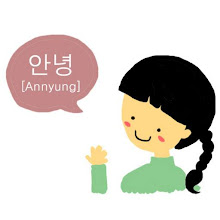판소리는 광대 한 명이 리 장단에 맞추어 몸짓과 노래로 이야기를 들려주는 한국 전통 민속 공연의 하나이다. 이는 조선 후기에 서민들이 창극을 붙여 부르던 노래로 한 사람이 노래하고, 말하고, 몸짓을 하는데, 여기에 고수(鼓手)의 장단과 추임새도 중요한 역할을 한다. 대표적인 판소리로는 '춘향가', '심청가', '흥부가', '토별가' 등이 있다. 판소리는 2003년 11월 유네스코 '인류구전 및 세계무형유산걸작'으로 선정되어 세계무형유산으로 지정되었다.
Pansori is one of the traditional Korean folk performances in which one performer tells a story by singing and using movements along with the rhythm of drum. Pansori is the opera of the commoners at the latter part of the Joseon Dynasty. One person sings, speaks, and shows gestures, and gosu (the drummer) also contributes with rhythm and muttering words in between. 'Chunhyang-ga', Simcheong-ga, Heungbu-ga', Tobyeol-ga' are all well-known pansoris.
In 2003, pansori has been appointed to be a masterpiece of the Oral and Intangible Heritage of Humanity by UNESCO.
탈춤은 탈을 쓰고 춤을 추는 종합 예술이다. 주로 서민들을 대상으로 공연되기 때문에 그 내용이 양반에 대한 비판이나 풍자가 많다. 또한 배우가 공연하고 관객이 구경하는 일방적인 공연이 아니라 야외무대에서 관객들이 공연에 직접 참여해 배우와 함께 어울릴 수 있는 열린 공연이다. 배우와 관객이 하나가 되는 탈춤은 지금도 많은 사랑을 받고 있다.
Talchum is a synthetic art in which performers wear masque and dance. Since the target audiences are commoners, the contents are mostly satire and criticism of the upper class. Unlike typical performances in which only performers participate and the audiences watch, the audiences can participate as well with actors in the outdoor stage. Talchum that brings audience and performer together is still loved by many people.







.jpg)





0 comments: